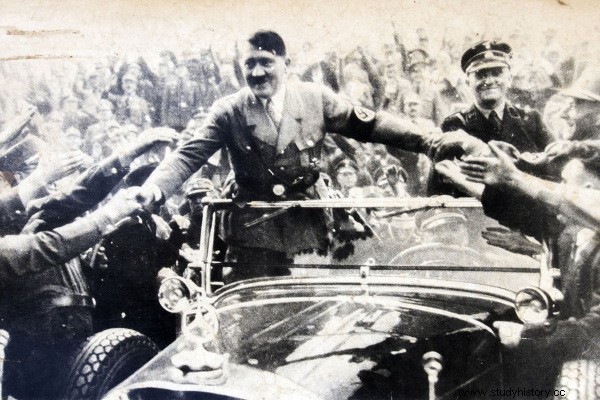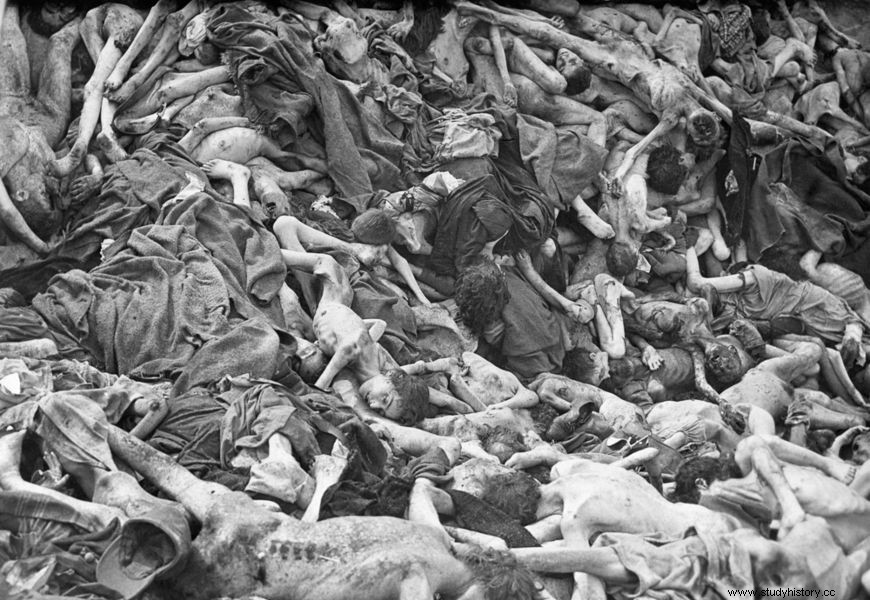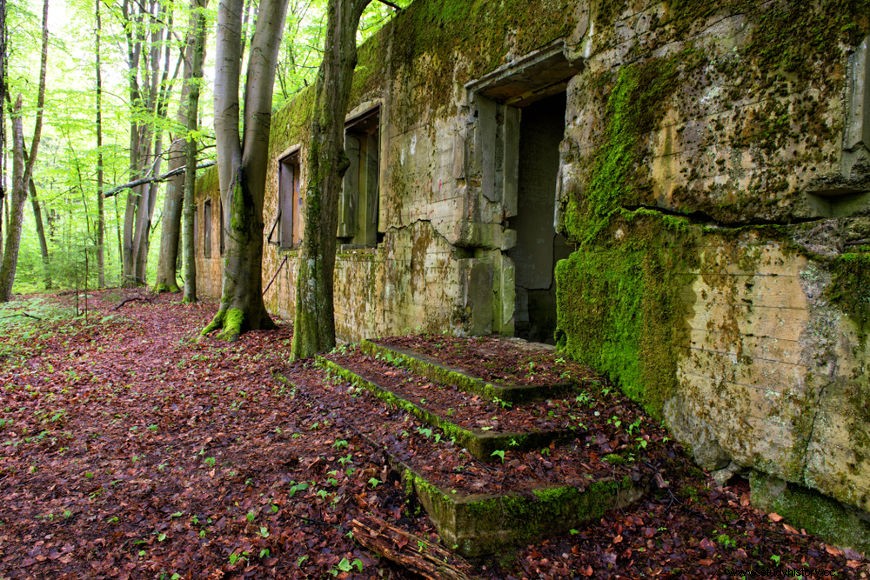Operation Valkyrie was carried out by Nazi army officers, with the aim of assassinating Adolf Hitler, leader of Germany. These officers were dissatisfied with the war and with the way that Hitler governed the country and, therefore, they tried to kill him in July 1944, in order to take power and then negotiate the German surrender in the war. This operation failed, and those involved had to face the harsh reprisal carried out by the Nazis.
Access also :Learn about the last Nazi offensive in World War II
Dissatisfaction with Hitler
Operation Valkyrie mobilized officers of the Wehrmacht, the German army, with the aim ofkilling Hitler and ending the war . This dissatisfaction with the German dictator within the Nazi Party and the German army was not new, but it was resized by the defeats that Germany faced in the war and the treatment given to Jews in the Holocaust.
Discontent with Hitler gained strength within the army from the crisis involving the Sudetenland in 1938. This crisis was established with Hitler manifesting his intention to invade and annex the Sudetenland, belonging to Czechoslovakia, to German territory. This started a major diplomatic conflict in Europe, resolved with the Munich Conference.

Many officers were dissatisfied with the risk of a war being started with this crisis. This group ended up losing strength when the war started, and the Germans began to carry out a series of conquests across the European continent. In any case, there were officers who remained secretly opposing Hitler.
Some of the names opposing the former German leader were:Ulrich von Hassell (German diplomat), Adam von Trott zu Solz (German lawyer and diplomat) and Ludwig Beck (official of the Armed Forces of Germany). Dissatisfaction also existed in groups of civilians who, in some cases, joined forces with officers to discuss possibilities of overthrowing Hitler. A more extreme case took place in November 1939, when Georg Elser tried to kill the Nazi tyrant with a bomb installed in a brewery in Munich.
The people who tried to kill Hitler via Operation Valkyrie were part of the Resistance German and rejoined in mid-1941. One of those directly responsible for this was General Henning von Tresckow , a German army officer who was displeased with the Wehrmacht's treatment of Soviet officers (called commissars). Other names mentioned, such as Hassell and Beck, also contributed to rearticulating the German resistance.
Login also :See details of the workings of the Nazi concentration camps
Why kill Hitler?
The German resistance was made up of Nazi officers dissatisfied with Hitler, and the reasons for this dissatisfaction are varied. The ideas of opposition and resistance to Hitler gained strength from 1941 and, mainly, from 1942. The two factors that explain them are the state in which the war was found and the barbarism spread by the German troops in Eastern Europe.
In the case of the course of the war, it is important to consider that, from the turn of 1941 to 1942, the situation in Germany began to get complicated. This happened after the invasion of the Soviet Union, in June 1941. The Soviet resistance involved heavy losses to the Germans, and they did not have enough resources to make possible the defeat of the communists.

This information was known to the Nazi leadership at the end of 1941, and the fear for the consequences of the war led some officers to plot against their leader. On the other hand, there were those who were also dissatisfied with the brutality of the German troops in war. The shooting of Soviet officials and the violence committed against Jews also generated outrage in some.
Other officers were uncomfortable with the way the Nazis treated Jews, but not necessarily with their persecution. Thus, the combination of thefear of military defeat and the destruction of Germany with outrage over the violence of the Holocaust is that it mobilized German officers to conspire against the dictator.
The German resistance, in turn, was not just made up of people who wanted to assassinate Hitler. There were those, like Helmuth von Moltke (Prussian Field Marshal), who did not agree with carrying out an attempt on the dictator, as this would make him a martyr. Other members of the German resistance were:Dietrich Bonhoeffer (theologian and German shepherd), Johannes Popitz (Prussian finance minister), Carl Goerdeler (German official and politician), among others.
Operation Valkyrie
The plot to kill Hitler known as Operation Valkyrie began to be organized in 1943. Big names behind it were the German officers Henning von Tresckow , Claus Schenk Graf von Stauffenberg and Friedrich Olbricht . Those involved with the operation planned to carry out a military coup in Germany after Hitler was killed. From there, they wanted to negotiate Germany's surrender to the war.
Some of those involved with the operation hoped that the surrender negotiated with the Allies would allow for thesecurity of the conquered territories by the Germans throughout the war. The historian Ian Kershaw says, however, that, for the Allies, this possibility of a negotiated exit and the maintenance of territories for the Germans were not considered, since the war was in their favor from 1942/1943|1| .
The operation's members searched the German army corps for other people dissatisfied with Hitler, and, once the group was well established, began planning the assassination. Attempts to do so were made in 1943, but circumstances caused these to either fail or be aborted.
After such failures, it was decided that the attack would be carried out where he least expected it:in his own headquarters . This decision made Stauffenberg a leading role in the conspiracy. The officer joined the resistance between 1942 and 1943 by not agreeing with the Holocaust and considering that Hitler was leading Germany to destruction.
Stauffenberg volunteered to carry out the assassination against Hitler after he was appointed to the post of Chief of the General Staff, from Friedrich Fromm, an army officer who knew about the conspiracy but was not directly involved in it. This new position for Stauffenberg gave him direct access to the leader of Nazism, which increased the chances of assassinating him.
Login also :Discover the history of the great organized attack against the Jews of Germany
How was the attack?

The conspirators decided that the bombing would take place in July 20, 1944, in Wolf's Lair , name of Hitler's headquarters, located in Rastenburg, Prussia Oriental (today Polish territory). Stauffenberg had tried to kill Hitler on other occasions, but without success.
For the attack on Toca do Lobo, two bombs were prepared, but, at the time, Stauffenberg only had time to arm and take one. The bomb was placed in a case and taken to the meeting room inside the headquarters. A few minutes before it exploded, Stauffenberg left the room on the grounds that he would take a call.
The bomb blast happened and caused great destruction in the meeting room. Several people were injured and four died , but Hitler survived . The Nazi leader had minor injuries such as burns in some parts of her body, and her eardrums were burst . Shortly after the bombing, Stauffenberg made a call to Berlin saying that it would be impossible for Hitler to have survived the intensity of the explosion.
The rebel officer, however, was wrong. As the bomb was positioned on the opposite side from which Hitler was, when the explosion happened, the table protected the dictator and made him only have the aforementioned injuries. After communicating the probable conclusion of the attack, Stauffenberg boarded a plane for Berlin.
The military coup began in the capital shortly after Stauffenberg's communiqué, but with the confirmation that Hitler had survived, it also failed . On the same day, the same Friedrich Fromm started a “file burning” operation and mobilized troops to arrest those involved in the operation.
Fromm's intention was to prevent any information relating to the operation from being leaked. His action caused, on the 21st of July, Stauffenberg , Olbricht and two other people were shot summarily . Others involved, like Beck and Tresckow, committed suicide after the fiasco.
The repression ordered by Hitler was relentless . The German secret police, the Gestapo, crushed pockets of resistance in Paris, Vienna and Prague, and in all, the reprisal resulted in the deaths of 5,000 people.
Notes
|1| KERSHAW, Ian. Hitler . São Paulo:Companhia das Letras, 2010, p. 859.
Image credits
[1] Igor Golovniov and Shutterstock
[2] Everett Historical and Shutterstock
